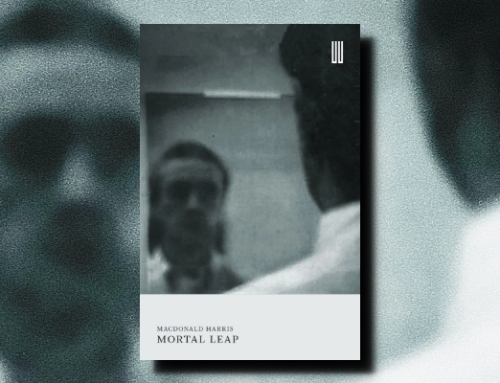The Lazarus Project
by Aleksandar Hemon (2008)
Picador (2008)
294 pp

My first stop on this year’s National Book Award finalists (and maybe my last since I have yet to acquire one of the other books) is The Lazarus Project (2008), by an author who has a very interesting history. Apparently in 1992 he left Sarajevo to visit Chicago, planning to stay no longer than a few months. Then Sarajevo came under siege, so he remained in Chicago. His first story in English was written in 1995. He has written two other books, one of which, Nowhere Man, was a finalist for the National Book Critics Circle Award. I don’t foresee such talent in my future, let alone in a language foreign to my own.
The book started out well for me (and even though I may have just given away my final judgment, there’s more to it than that). It’s 1908 Chicago. A young Jewish immiigrant, Lazarus Averbuch, is waiting to visit Chicago’s chief of police. Hemon does an excellent job here setting the scene. I am not a regular visitor of Chicago, but this passage hit it on the head for me:
The late winter has been gleefully tormenting the city. The pure snows of January and the spartan clouds of February are over, and now the temperatures are falseheartedly rising and maliciously dropping: the venom of arbitrary ice storms, the exhausted bodies desperately hoping for spring, all the clothes stinking of stove smoke.
Lazarus visits the Chief once before 9 a.m. but is turned away because of the early hour. When he returns, he is allowed to enter, and the Chief, wary because of Lazarus’s foreign appearance, asks what he wants. Lazarus hands him a piece of paper. The Chief looks at it and then opens fire on the young man, killing him on the spot (and injuring his own son and servant in the process). This much is true. Young Lazarus Averbuch was really shot dead by the George Shippy, the Chicago chief of police, on March 2, 1908. With residents terribly frightened of foreign “anarchists,” early twentieth-century America was the scene for such events, events that just would be so out of place today. At least that’s what we might think.
The book splits into two narrative threads after this short introduction. One continues following the course of events in 1908, after Lazarus was killed. His sister is left alone in a new world that as of yet has not been kind to her. This is a very intriguing historical narrative. Indeed, it made me enjoy the book.
The other narrative takes place in the early twenty-first century. Brik, a young immigrant writer in Chicago, finds the story of Lazarus and wants to develop it. After securing a grant, he and his friend travel to Eastern Europe, wandering from city to city, seemingly finding not much but their own squalid lives. This second narrative held my attention for the first few chapters, but once Brik and Rora started traveling, I quickly lost interest. I’m sure that I missed much in these passages, so some of my final reaction to the book is my own fault for, in a sense, giving up. My eyes did perk up when Lazarus was mentioned in this narrative, though the transitions were clunky (things like, “blah blah blah hair. Lazarus had blah hair.”).
When dealing with dual narrative novels, this disappointment seems to be happening frequently to me as of late. One narrative thread is dreadfully less interesting, causing me to lose out on what I’m sure the author wanted me to feel. Not only that but also when I find the flaws in the weaker narrative, I find similar flaws with the one I have been enjoying. I’m thinking of A Case of Exploding Mangos and The Enchantress of Florence (though in Enchantress the narratives were not necessarily running concurrently). I do like these types of books when done well — here I’m thinking of Possession. Unfortunately, The Lazarus Project fell into the category labeled disappointment.
When Brik is wandering about Europe, the chapters dealing with 1908 become short and almost seem to wander as well, as if Hemon is not sure how to keep this thread going while he finishes the tour of Eastern Europe. We follow Lazarus’s sister around and witness the injustice served her. While it is always tragic, it ceases to become enlightening.
Another interesting aspect of Hemon’s writing is the style that is on one page very evocative and subtle but on the next page, well, blatant and dull. This tends to mimic the character of Rora, who is sometimes deep and pensive and intelligently in control while at other times puerile. And once I start getting annoyed at an author’s style, it’s all downhill from there, even if it’s unfair. I start, for example, rolling my eyes at the overly self-conscious passages, like this one:
I paid Andriy and wished him good luck on his way back, and thus he completed his purpose and exited this narrative.
All in all, I liked this book more than this review shows, but I found it lacking throughout. The ties between the two narratives (and the not-so-subtle but much underdeveloped third of the biblical Lazarus) are never fully developed for me. Perhaps this is because I don’t think the connections between immigration in the early twentieth century and in the early twenty-first century are really as reducible as they appear here. There are some ties, but in my (admittedly unsubstantial) perspective these ties are not enough to substantiate this book. Of course, Hemon himself should know a lot more about the immigrant experience than I do, him having experienced it for one thing, presumably having researched it extensively for this book for another. It just wasn’t communicated to me in a convincing way, I guess. It felt like the connections between all three narrative (1908, 2004, 33ish A.D.) were superficial and forced. Or, as I said earlier, I stopped giving it the thought it deserved — but the fault on that one goes both ways.









That’s too bad about all the meandering. The title and premise sound so interesting.
I thought so to, workingwords. Then again, it still was good at parts. Oh well!
I too was far more interested in the Lazarus storyline than Brik’s. In fact I found Brik really quite annoying (as does his own friend) and found myself wishing more of the book was devoted to the historical sections. A fuller review is here.
That said Hemon seems to be a very promising writer.
Glad you commented here, William, now that The Lazarus Project is a finalist for another major literary award. Have to say, I’m not sure I see what the judges are seeing. Promising, yes. And perhaps even noteworthy. But one of the best books of the year?? I don’t think so. It’s possible I missed a lot, though, since I started to look forward to the Lazarus storyline and tended to get annoyed during Brik’s arc.
I’ve actually not read a really positive review of this book. Most people say it’s decent, yet somewhere someone must think it’s more than that. Please let me know what I’m missing.
The most positive (and thoughtful) review that I saw was in the NYRB a few issues back — I’ll admit I’m too lazy to find the link. It did convince me that there was a reason to read this book, but I’m pretty sure my opinion will be the same as yours, Trevor. I do like your qualification that it is not a bad book, but rather a good start. That sort of thing usually causes me to have “appropriate” instead of “unreal” expectations when I start a book.
Are you planning on finishing The Lazarus Project before the announcement of the winner of the NBCC Award, Kevin? I look forward to your thoughts regardless.
Definitely before the winner is announced — probably in two weeks. And I will be commenting, as I somehow always do. Can’t seem to hold myself back.